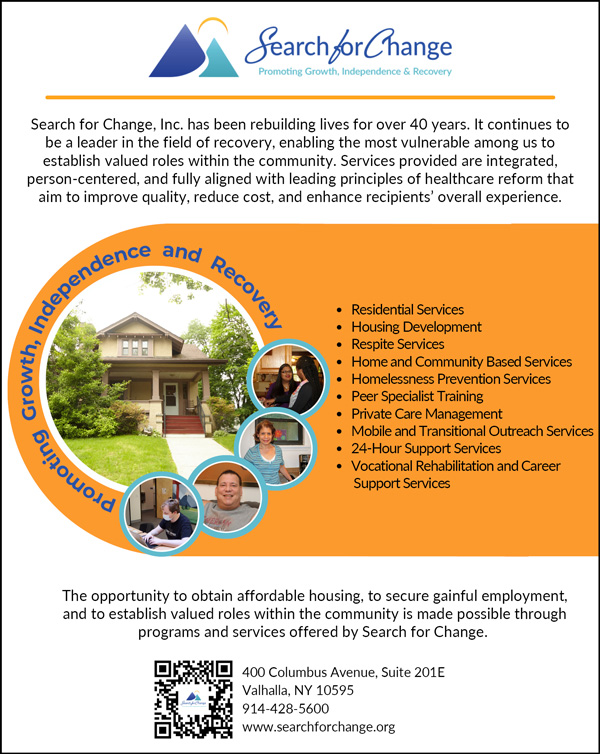Stigma against persons with mental illness has waned in recent years, as affirmed by a Harris Poll administered on behalf of the American Psychological Association. This poll found a significant majority of Americans (87%) believed there is no shame in having a mental health diagnosis, and a comparable proportion of respondents (86%) said they believed individuals with mental illness may recover (American Psychological Association, 2019). As promising as these findings are, however, they belie a disconcerting undercurrent that suggests stigma is still prevalent, particularly among individuals who have neither experienced mental illness nor been exposed to others with a mental health diagnosis. Less than one-third of respondents who had a mental health diagnosis or were acquainted with others who did agree with the statement, “People with mental health disorders scare me,” whereas nearly half (47%) of those who lacked personal experience with mental illness endorsed this statement (American Psychological Association, 2019). To bastardize a quotation commonly attributed to Geoffrey Chaucer, unfamiliarity appears to breed contempt, at least when the targets of the contemptuous have a mental illness.

Ashley Brody, MPA, CPRP
This phenomenon may be interpreted as a manifestation of the “fundamental attribution error,” a construct proposed by social psychologists nearly 50 years ago that suggests individuals are inclined to attribute others’ behaviors to personality or dispositional factors and to ascribe their own behaviors to circumstantial or situational elements beyond their control (Explore Psychology, 2023). Individuals are most susceptible to this error when the target of their attribution is unknown or unfamiliar to them. That is, we commit the fundamental attribution error when we lack information concerning the internal states of other people and must draw inferences about their behavior based on assumptions, stereotypes, and prejudices. In doing so, we employ what the social science literature describes as “heuristics.” Put simply, these are conceptual models or mental shortcuts through which we interpret the world in a generalized manner that obscures the subtleties and nuances underpinning behavior (Cherry, 2022).
Some data suggest the fundamental attribution error is predominant in certain (primarily Western) cultures that promote an ethos of individualism and corresponding belief that individual characteristics (e.g., motives, personality, general disposition, etc.) govern our behavior (Corrigan & Watson, 2002). By contrast, it is less prevalent in societies with collectivist orientations that readily acknowledge the influence of group dynamics on human affairs, as affirmed by research that suggests attributional errors and stigma against persons with mental illness are less widespread among certain Eastern and Asian cultures reputed for their advancement of communal values (Fabrega, 1991).
The fundamental attribution error may amplify prevailing stereotypes applicable to marginalized populations that include persons with mental illness. For instance, an (erroneous) belief that persons with mental illness are incompetent or dangerous reflects an enduring stereotype that may be strengthened by the fundamental attribution error. One who subscribes to this stereotype is likely to embrace it with even greater fervor when presented with a negative depiction of mental illness (i.e., a person yelling or gesticulating on a street corner), particularly when this depiction fails to include contextual information that would produce a more nuanced understanding. Regrettably, depictions of mental illness in the news media and popular culture writ large are seldom positive, and they rarely include information that encourages their audiences to look beyond dispositional factors to situational variables implicated in idiosyncratic or dysfunctional behavior. Chronic underfunding of behavioral healthcare and community-based services and a dearth of affordable housing and employment opportunities signal a corrosion of the social safety net that has had predictably adverse effects on the most vulnerable among us. Nevertheless, the intricacies of public policy cannot be captured in soundbites or the fleeting (and often unflattering) images of mental illness commonly fed to the general public. We are therefore left to rely on conceptual shortcuts that reinforce and perpetuate stigma.
To effectively challenge prevailing attitudes toward persons with mental illness we must employ strategies that illuminate the particulars behind the people. “Corrective information” may exert a countervailing effect on stereotypes, as affirmed by a body of research that has explored this and related strategies designed to combat stigma. In one study, investigators supplied research subjects with information that corrected misconceptions concerning mental illness and subsequently shared a stigmatizing newspaper article concerning an individual with schizophrenia. Subjects who received corrective information were less inclined to embrace the stigma conveyed in this article when compared to subjects who did not receive this information (Penn, Kommana, Mansfield, & Link, 1999). This study, administered more than 20 years ago, has been followed by an extensive body of research that affirms its central findings and suggests similar interventions. A comprehensive review of research on strategies to combat stigma has validated the role persons with lived experience in recovery may play in dispelling common myths and misconceptions. An editorial published in The Lancet in 2016 summarized the research literature, and it highlighted the promise of educational campaigns that feature persons with mental illness whose progress in recovery has enabled them to participate fully in the fabric of community life (“The Health Crisis of Mental Health Stigma,” 2016). Such campaigns have become commonplace, and some now receive financial support from the NYS Office of Mental Health (OMH) via voluntary contributions from state taxpayers.
Interventions that increase the visibility of persons with mental illness, particularly ones that include sufficiently nuanced depictions of their lives and circumstances, are poised to dispel longstanding myths that continue to undermine progress and to perpetuate stigma. For these interventions to succeed, however, they must achieve sufficient depth and breadth to counter a deeply entrenched public discourse that eschews nuance in favor of simplicity.
Ashley Brody, MPA, CPRP, is Chief Executive Officer at Search for Change, Inc. The author may be reached at (914) 428-5600 (x9228) or abrody@searchforchange.org.
References
American Psychological Association, 2019.
(www.apa.org/news/press/releases/2019/05/mental-health-survey)
Cherry, K. (2002). What are heuristics? These mental shortcuts can help people make decisions more efficiently. Verywellmind. https://www.verywellmind.com/what-is-a-heuristic-2795235
Corrigan, P.W. & Watson, A.C. (2002). Understanding the impact of stigma on people with mental illness. World Psychiatry, 1(1), 16-20.
Explore Psychology, 2023.
(www.explorepsychology.com/fundamental-attribution-error-definition-causes-and-how-to-avoid-it)
Fabrega, H. (1991). Psychiatric stigma in non-Western societies. Comprehensive Psychiatry, 32(6), 534-551.
Penn, D.L., Kommana, S., Mansfield, M., & Link, B.G. (1999). Dispelling the stigma of schizophrenia: II. The impact of information on dangerousness. Schizophrenia Bulletin, 25(3), 437-446.
The Lancet. (2016, March 12). The health crisis of mental health stigma [Editorial]. https://www.thelancet.com/journals/lancet/article/PIIS0140-6736(16)00687-5/fulltext




